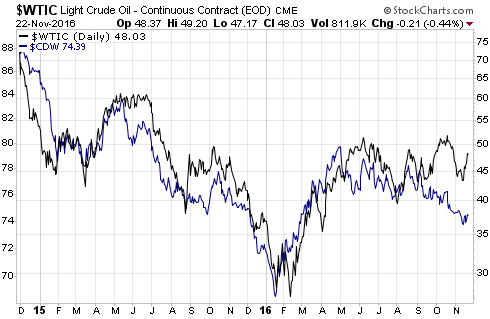The euro-zone appears to be on target for another banking crisis during 2017. Also, the stage is set for political upheaval in some European countries, a general worsening of economic conditions throughout Europe and widening of the already-large gaps between the performances of the relatively-strong and relatively-weak European economies. It’s a virtual certainty that as was the case in reaction to earlier crises/recessions, blame for the bad situation will wrongly be heaped on Europe’s experiment with a common currency.
The idea that economically and/or politically disparate countries can’t use a common currency without sowing the seeds for major problems is just plain silly. It is loosely based on the fallacy that economic problems can be solved by currency depreciation. According to this line of thinking, countries such as Italy and Greece could recover if only they were using a currency that they could devalue at will. (Note: The destructiveness of the currency devaluation ‘solution’ was covered in a previous blog post.)
The fact is that economically and politically disparate countries throughout the world successfully used a common currency for centuries up to quite recently (in the grand scheme of things). The currency was called gold.
The problem isn’t the euro; it’s the European Central Bank (ECB). To put it another way, the problem isn’t that a bunch of different countries are using a common currency; it’s that a central planning agency is attempting to impose the same monetary policy across a bunch of different countries.
A central planning agency imposing monetary policy within a single country is bad enough, in that it generates false price signals, foments investment bubbles that inevitably end painfully, and reduces the rate of long-term economic progress. The Federal Reserve, for example, has wreaked havoc in the US over the past 15 years, first setting the scene for the collapse of 2007-2009 and then both getting in the way of a genuine recovery and setting the scene for the next collapse. However, when monetary policy (the combination of interest-rate and money-supply manipulations) is implemented across several economically-diverse countries, the resulting imbalances grow and become troublesome more quickly. That’s why Europe is destined to suffer a monetary collapse well ahead of the US.
It should be kept in mind that money is supposed to be neutral — a medium of exchange and a yardstick, not a tool for economic manipulation. It is inherently no more problematic for totally disparate countries to use a common currency than it is for totally disparate countries to use common measures of length or weight. On the contrary, a common currency makes international trading and investing more efficient. In particular, eliminating foreign-exchange commissions, hedging costs and the losses that are incurred due to unpredictable exchange-rate fluctuations would free-up resources that could be put to more productive uses.
In conclusion, the problem is the central planning of money and interest rates, not the fact that different countries use the same money. It’s a problem that exists everywhere; it’s just that it is more obvious in the euro-zone.
 Print This Post
Print This Post

